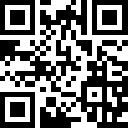浙江省2010年10月自学考试英语教学论试题
浙江省2010年10月高等教育自学考试 $lesson$
英语教学论试题
课程代码:10057
Ⅰ. Basic Theories and Principles (20%, 2 points for each)
Directions: Choose the best answer for the following questions.
1. Which of the following beliefs does NOT belong to Humanist theory? ( )
A. It treats a learner not just as a student in the classroom, but as a human being with feelings and emotions.
B. It was considered very important to lower the inhibitions that cause a barrier to language education.
C. Its emphasis is on acceptance and encouragement.
D. It is the basis of the Audio-lingual Method of language teaching.
2. As defined by Krashen, the Natural Order consists of ( )
A. listening to a great deal of language input, then speaking, and then reading a great deal of meaningful input, which is formally taught, and finally writing
B. listening to a great deal of meaningful language input, then speaking, and then reading a great deal of meaningful input, which is formally taught, and finally writing
C. reading a great deal of language input, then speaking, then listening to a great deal of meaningful input, which is formally taught, and finally writing
D. reading a great deal of language input, then speaking, and then listening to a great deal of input, which is formally taught, and finally grammar
3. Which of the following statements is RIGHT? ( )
A. Skimming is for specific information.
B. Scanning is for general information.
C. Inferring is for detailed information.
D. Recognising rhetorical structures is to comprehend what the writer is saying.
4. “Schema” plays a very important role in understanding a given text. Schema theory ( )
A. focuses on the result of the reading rather than the reading process
B. uses bottom-up processing only
C. believes that top-down processing is better than bottom-up processing
D. claims that comprehending a text is an interactive process between the reader’s background knowledge and the text
5. The PPP Model refers to ( )
A. preparation, presentation and practice
B. preparation, practice and production
C. presentation, practice and production
D. presentation, promotion and production
6. The procedures of writing. The correct order is ( )
a. Make an outline; b. Correct and improve draft; c. Write final version; d. Write a draft; e. Select and expand one idea; f. List possible ideas.
A. afedbc
B. feadbc
C. eafdba
D. fedbca.
7. At _______ stage, students have the chance to use the new language freely and incorporate it into their existing language. ( )
A. practice
B. production
C. presentation
D. preparation
8. Which word has a negative connotation? ( )
A. Confident
B. Diligent
C. Notorious
D. Brilliant
9. Which of the following techniques is NOT the techniques of correcting mistakes? ( )
A. Self-correction
B. Peer correction
C. Teacher correction
D. Delayed correction
10. When the students do their activities, a teacher walks around the classroom, to see if any one needs help, both in ideas and language. What is the teacher’s role? ( )
A. Resource
B. Controller
C. Manager
D. Instructor
Ⅱ. Problem Solving (30%, 10 points for each)
DIRECTIONS: Situations in classroom teaching are provided here. In each situation there are some problems. Firstly, identify the problems; secondly, provide your own solutions according to the communicative language teaching principles and explain in details.
1. Littlewood proposed the two main categories of communicative activities, namely: functional communication activities and social interaction activities. Please make a comparison of them.
|
Functional communication activities |
Social interaction activities | |
|
emphasis |
|
|
|
aim |
|
|
|
standard for success |
|
|
|
typical examples |
|
|
2. List four purposes of pre-listening activities:
(1)
(2)
(3)
(4)
3. The stages of course design. List seven stages of Taba’s model of curriculum process.
(1)
(2)
(3)
(4)
(5)
(6)
(7)
Ⅲ. Mini-lesson Plan (50%)
The text is a dialogue for teaching speaking for primary students. Design activities for teaching speaking in context if necessary.
Louise: What colour’s your new dress?
Anna: It’s green.
Anna: Come upstairs and see it.
Louise: Thank you.
Anna: Look! Here it is!
Louise: That’s a nice dress.
It’s very smart.
Anna: My hat’s new, too.
Louise: What colour is it?
Anna: It’s the same colour. It’s green, too.
Louise: That is a lovely hat!
Your lesson plan should include the following aspects:
Lesson Plan:
(1) Name(s) of activity(ies)
(2) Objective(s) of the activity(ies)
(3) Type(s) of the activity(ies)
(4) Classroom organization of the activities
(5) Teacher’s role(s)
(6) Students’role(s)
(7) Teacher working time
(8) Student working time
(9) Teaching aid(s)
(10) Predicated problem(s)
(11) Solution(s)
(12) Homework
(13) Procedures
A. Pre-
B. While-
C. Post-
最新资讯
- 真题练习:自学考试《中国近现代史纲要》真题及答案(12.21)2024-12-21
- 真题训练!自学考试《外国文学史》真题及答案解析(11.9)2024-11-09
- 备考2025年自学考试:《外国文学史》真题训练(11.7)2024-11-07
- 论述题和简答题!2024年10月自考《中国近代史纲要》真题及答案2024-10-31
- 考后对答案!24年10月自考《习概》真题及答案解析2024-10-30
- 真题速递:24年10月自考《马克思主义基本原理概论》真题及答案汇总2024-10-30
- 24年10月自考《马克思主义基本原理概论》简答题和论述题答案汇总2024-10-29
- 简答题汇总!24年10月自考《美学》真题及答案解析2024-10-29
- 论述和简答题汇总!24年10月自考《习概》真题及答案2024-10-29
- 论述题!2024年10月自考《习概》真题及答案解析2024-10-29
 打卡人数
打卡人数


